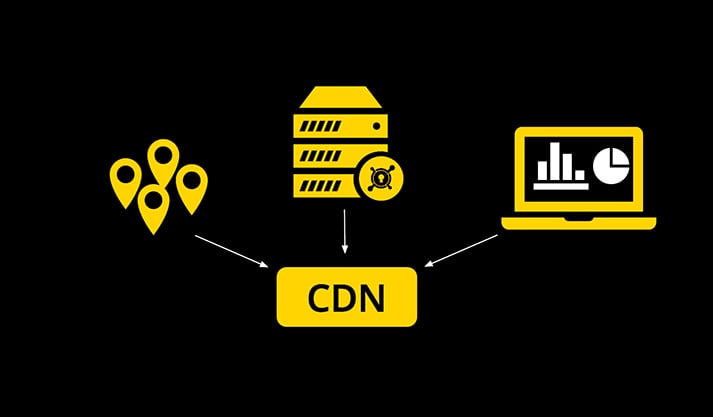With the world figuratively shrinking ever more and companies trying to address customers around the world on the same personal level, presenting your offerings in many local languages has become more important than ever. However, the creation of dual-language websites or multilingual projects carries high potential for errors.
As part of our work with many multinational clients, we here at Niteco have dealt with a large number of multilingual websites. In such corporate environments, we’ve encountered two main varieties of multilingual sites.
The first is the classic global corporate site. It’s essentially a single website with a default local version and the option to switch it to any of the markets in which that company is active. For instance, if it’s a US corporation and you open their site in Sweden, it will show you the Swedish version of the site, but you can also choose to visit the Russian version. All these different versions present the same basic content, localized where it’s needed.
The second variety is most often used by companies in Commerce. They create separate websites for the different markets in which they’re active and make them multilingual in order to address parts of the population that speak different languages or to lure expatriates in that country or buyers from abroad.
For both varieties, there are some basic guidelines that we at Niteco have found worth following when taking over or launching new multilingual websites. Mind that these are not written in stone and approaches can differ in some cases, but they’re what we deem best practices.
1. Do an audit of your site content
If you’re adding a new language version to an existing site, the first thing you need to do is perform a complete sitemap audit of your site. This helps you to make sure that you don’t overlook any content that may need to be translated for the new multilingual sites. In addition, it gives you the opportunity to do some website housekeeping and weed out pages you may no longer need.
As part of this audit and possibly in cooperation with local advisors or the translators you’ll be encountering, make sure to also audit the content itself and determine whether it is suitable for any new demographic you may be addressing with your multilingual website. The point of going for dual-language or multilingual sites is reaching out to more potential users or customers, so make sure that your content is up to the task.
2. Don’t cheap out on SEO-friendly translation
Be sure to get informed about the different localization services that are available by various vendors. Translation isn’t always just translation. Many agencies now offer translation services with an added focus on SEO-friendly content in the target language. If you want to implement a high-quality multilingual website, make sure that the content, especially marketing materials, isn’t just a literal translation.
For added value, go for a service called transcreation. For a slightly higher rate, you get translators with writing and marketing skills that not only translate your content but also adapt it to the requirements of the target market. Services such as these help you hit the ground running once you launch your site.
3. Collect all multilingual content before you implement
We’ve all been there. They may say, “Why don’t you get started with this first half and I’ll give you the second one once I have it?” From purely a time management perspective, that may sound good. From a content management perspective, not so much. And in managing the implementation of a multilingual website, content is what counts.
The worst-case scenario for a multilingual website is a page that’s missing its counterpart in a different language. To avoid such a thing, it’s imperative to collect all the needed content and perform QA measures on it before implementing it on your site. While this should be standard procedure for any website, multilingual ones have the added QA requirement of checking that each piece of content has its counterpart.
4. Multilingual SEO shouldn’t be an afterthought
If your site is going to have content in different languages, keep in mind that this content has to be search engine optimized for said language. SEO works differently in every language – keywords will vary, search behavior is different or content has to be changed to more accurately fit the local culture. What we‘re saying is that optimizing your multilingual content correctly for each language you’re using will take time.
The ideal approach is to immediately begin creating meta texts and alt texts once the content in the various languages (which should already be optimized as part of the localization process) is available. In the context of these best practices, any and all SEO meta texts should be part of the content that was prepared prior to implementation.
An important part of multilingual SEO is also to make sure any and all internal linking is replicated for the new language as well. In addition, if any content was changed significantly, there may be new links that can be made. Be sure to implement them as it’s a real boon to your SEO.
5. Choose fonts that support all the languages you need
This is a step in which many people make the mistake of assuming. Obviously, when your primary business language is English, you will know that you need to choose a special font if you’re creating a multilingual site that includes, for instance, Chinese or Arabian. But many overlook that even languages which use Latin letters sometimes use special characters that aren’t supported by all fonts.
German speakers know the dreaded squares or empty spaces that appear when a font doesn’t support their umlaut characters. Vietnamese speakers cringe when a text becomes illegible because the font doesn’t support their language’s many diacritics. All in all, it’s a localization catastrophe and another nightmare scenario for a multilingual site. A good option for a font that supports lots of languages is Google’s Noto font family.
6. Multilingual analytics aren’t one-size-fits-all
As is the case for SEO, data tracking and analytics is another area where language and culture make a huge difference. If you use Google Analytics (GA) and Google Tag Manager (GTM), you’re going to have to rework your setup to fit the new language. Make sure that the tags and goals you set for GTM are aligned with what you know about user behavior in any new demographic you may be addressing with your multilingual website. Basically, you need to treat the two halves (or however many languages you have in your sites) as completely distinct websites.
If you want to know more about how multilingual websites can benefit your business, contact Niteco today.
to transform your business and drive results?



